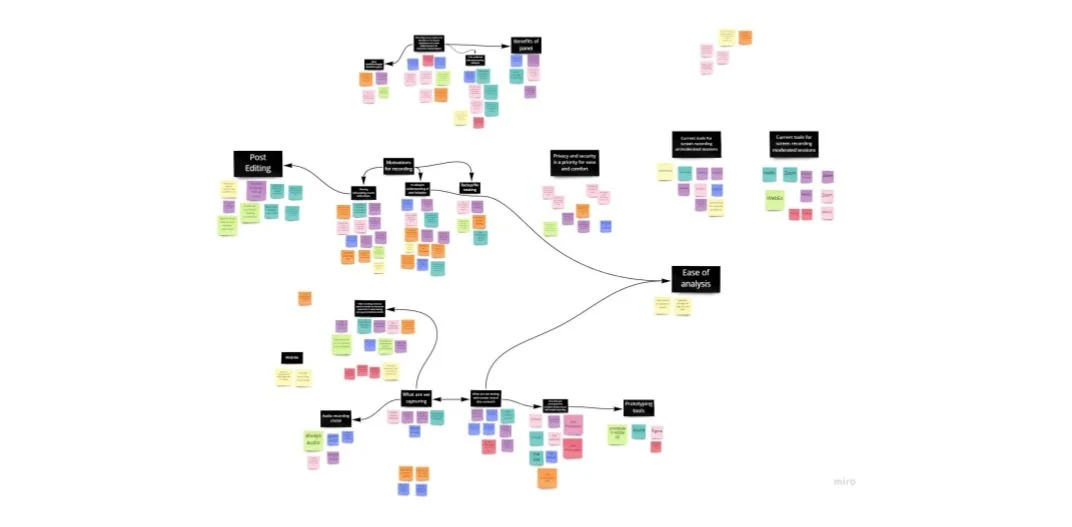Screen Recording Generative Study
This is a part-time contract project under the guidance of Curiosity Tank for UsabilityHub over the the Spring of 2021.
UsabilityHub was getting increasing requests for screen recording capability to be added to their feature wheelhouse. Before going about building anything, they wanted to be sure they better understood how users defined “screen recording” and how people used and wanted to use screen recording.
I was one of two UX Researchers, tackling the project from the perspective of current users and potential users. Together we worked directly with the product designer leading the project to ensure the research goals and study plan aligned with UsabilityHub’s goals and intended use. Establishing these goals from the beginning allowed us to move the work forward even when immediate feedback wasn’t possible. The following case study covers the work that I owned, focusing on potential customers.
Collecting Participants
Participant recruitment was an initial challenge because UsabilityHub was strongly interested in talking with people who had explicitly made requests for a screen recording feature. However, this pool of people was much too small to recruit effectively. We compromised and expanded the search, but kept the criteria specific enough so that we could find participants who demonstrated similar needs to that initial customer support pool. I focused on the non customer base to get a better understanding of how researchers outside of the UsabilityHub sphere perceive and use screen recording, in comparison to the customer base.
One example question from the survey screener to find initial smoke signals for screen recording practices.
Piecing Together Actionable Insights
After conducting my 8 interviews, I analyzed and synthesized my data through thematic analysis to piece out common perspectives and needs. I also assisted with the analysis of my partner’s interview data, totaling to 15 interviews, to find any commonalities between customers and non-customers.
We saw 3 key takeaways, along with future research opportunities, and initial product recommendations. While we found that there were clear patterns in how researchers defined and used screen recording, the biggest insight for me was that screen recording is part of a larger overarching need and desire for richer insight into users. Therefore, addressing this need goes beyond only screen recording or any individual feature.
Conducting thematic analysis in Miro with tags collected from Dovetail.
Future Work
While this study defined screen recording and its core features, further research should be done into the processes surrounding screen recording, for example onboarding processes and security concerns, to create a better end-to-end experience. In general, research into screen recording should be used to inform, and be informed by, studies of other features to build a cohesive ecosystem that can support customers’ desire for rich user insights.
Personal Takeaways
Nailing down those common goals and expectations from the get go will define the success of the research project, especially in this case where working across a global time zone significantly reduced opportunities for direct communication. That being said, setting regular meetings and dedicating that time to drawing out feedback will help to ensure you are on track.
This consistent communication and alignment is what’s going to ensure buy-in on the research study.
The expectations of potential customers and current customers often don’t align, and there should be a balance between meeting the two.
Research can become a very creative process since you face a lot of roadblocks along the way. There’s a lot you can prepare for ahead of time, especially when planning an interview, but sometimes you have to make do and adapt.
Looking back on this study, I would have dedicated some more time to the secondary research and competitive analysis to inform my survey and interviews. Additionally, I think we would have been better off focusing our criteria more specifically on unmoderated screen recording use to get a better alignment with UsabilityHub’s current services.


